5000 Words and Five Books on Mindfulness
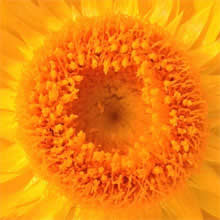
I’m a bookworm from way back but this year my reading has mainly been on mindfulness and meditation. I adore travel adventures that actually take me places but journeys of self-discovery can take place anywhere and so often adventures of self-knowledge start with a good book.
Call me old fashioned but I’ve always loved books and reading is one of my best habits. I don’t watch TV and although I do surf the Internet (a lot!) that’s all about reading and research including lots of blog reading. I don’t watch YouTube videos or look at funny cat websites online (much!) although I can get sucked into the vortex known as Facebook if I’m not careful.
But whatever happens I read a book every day, mostly at night when I try to get tucked up in bed by 9pm. Some nights I’m so pooped I can only read for 10 or 20 minutes before I fall asleep, but I often enjoy reading for 40 minutes or longer before lights out.
When I read non-fiction I take notes too, highlighting passages to write down later. I usually just take notes for myself, to help me focus and make the lessons stick but this time I thought I’d share them with you to create a mindfulness cheat sheet we can recheck anytime.
If you’re looking for more books on mindfulness, meditation or personal development check out my other blog post 10 books to change your life or see my list of books that will change your life on Amazon. With those 10 books and the five books on Mindfulness listed here (which you can also see as a List on Amazon) you should have enough reading about mindfulness to keep you busy for a whole year.
5 Hot Books on Mindfulness and a Mindfulness Cheat Sheet
1. Wisdom 2.0: The New Movement Toward Purposeful Engagement in Business and in Life by Soren Gordhamer
I’m right into the meditation and all the Buddhist stuff right now. It’s medicine for me and, while it would be an exaggeration to say meditation and mindfulness has saved my life, it’s certainly brought moments of joy and peace back into my world.
This book is on the meditation and mindfulness theme but skewed towards people who work on computers and the Internet. That’s me all right and if it’s probably you too because almost everyone uses competers these days. If you find you’re as distracted by the Internet as me then you need to read this book because:
“The moment we are living right now is never enough; there is always a future one that we believe will bring us the satisfaction we seek. In the state of old mind, it does not matter how fast our Internet connection, how sophisticated our handheld device, or how well paying job… Life is dull.
The frustration we feel comes from not making progress in living the potential we know is possible when we are free of old mind. To do this, we must be as knowledgeable about our internal world as we are about the external, as attuned to our inner technologies as to the outer ones.”
2. I Am an Emotional Creature: The Secret Life of Girls Around the World by Eve Ensler
Short and very sweet read for emotional women. Which means every woman. Mindfulness is about turning towards emotion rather than trying to fight or suppress them and there are some good lessons here about getting in touch with your body and emotions. Here are three favourite bits:
“Here’s what I’m telling you:
“Always fight back
Ask for it
Say you want it
Cherish your solitude
Take trains by yourself to places
You have never been
Sleep out alone under the stars
Learn how to drive a stick shift
Go so far away you stop being afraid of
not coming back
Say no when you don’t want to do something
Say yes if your instincts are strong
Even if everyone around you disagrees
Decide whether you want to be liked or admired
Decide if fitting in is more important than finding out
What you’re doing here”“Good question – why do we apologise about expressing our needs?”
“It’s easier to be mean than smart
But that isn’t who you are.”
3. Wherever You Go, There You Are: Mindfulness Meditation in Everyday Life by Jon Kabat Zinn
Amazing book with many takeaways and amazing quotes.
On the importance of letting go:
“It is a conscious decision to release with full acceptance into the stream of present moments as they are unfolding.”
On anger:
“Awareness sees the anger; it knows the depth if the anger; and it is larger than the anger. It can therefore holds the anger the way A pot contains food. The pot of awareness helps us cradle the anger and see that it may be producing more harmful effects than beneficial ones, even if that is not our aim. In this way, it helps us cook the anger, digest the anger, so that we can use it effectively, and, in changing from an automatic reacting to a conscious responding, perhaps move beyond it altogether. This and other options stem from a careful listening to the dictates of the whole situation.”
On meditation:
“Try: asking yourself why you meditate or why you want to meditate. Don’t believe your first answers. Just write down a list of whatever comes to mind. Continue asking yourself. Also, enquire about your values, about what you honor most in life. Make a list of what is really important to you. Ask yourself: what Is my vision, mind map for where I am and where are you going? Does this vision reflects my true values and intentions? Am I remembering to embody those photos? Do I practice my intentions? How am I now in my job, in my family, in my relationships, with myself? How do I want to be? How might I live my vision, my values? How do I relate to suffering, both my own and others?”
“For meditation to do its work, we have to be willing to do ours. We must be willing to encounter darkness and despair when they come up and face them, over and over again if need be, without running away or numbing ourselves in the thousands of ways we conjure up to avoid the unavoidable.”
“Try: being open to the prince and the Princess, the king and the Queen, the Giant and the witch, the wild man and the wild woman, the dwarf and Crone, and the warrior, the healer, and the trickster within yourself. When you meditate, put the welcome mat out to all of them.”
On travel as an escape mechanism:
Why should the Lord of the country
Flit about like a fool?
If you let yourself be blown to and fro,
You lose touch with your root.
If you let restlessness move you,
You lose touch with who you are.”
Lao-Tzu, Tao-te-Ching
On soul searching:
“Direct your eye inward, and you’ll find
A thousand regions in your mind
Yet undiscovered. Travel them and be
Expert in home cosmography.”
Thoreau, Walden
On finding your way in life:
“The truly interesting question here is, “what exactly is my way?”,Meaning my “Way” with a capital W. Rarely do we contemplate our life with this degree of probing. How frequently do we linger in such basic questions as “who am I?”, “Where am I going?”, “What path am I on?”, “Is this the right direction for me?”, “If I could choose the path now, in which direction which I head”, “what is my yearning, my path?”, “What do I truly love?”
Contemplating “what is my way?” Is an excellent element to inject into a meditation practice. We don’t have to come up with answers, not think that they have to be one particular answer. Better not to think at all. Instead, only persist in asking the question, letting any answers that formulate just come of themselves and go of themselves. As with everything else in the meditation practice, we just watch, listen, note, let it be, let go, and keep generating the question, “What is my way?”, What is my path?”, “who am I?”
The intention here is to remain open to not knowing, perhaps allowing yourself to come to the point of admitting, “I don’t know,” and then experimenting with relaxing a bit into this not knowing instead of condemning yourself for it. After all, in this moment, it may be an accurate statement of how things are for you.”
On life as an adventure:
“For men and women alike, this journey is the trajectory between birth and death, a human life lived. No one escapes the adventure. We only work with it differently.”
On what the Dalai Lama said about the notion of low self-esteem – he couldn’t understand the concept of low self esteem and was saddened to learn about it because such feelings are unheard of among Tibetans.
“Maybe we are overdeveloped outwardly, and underdeveloped inwardly. Perhaps it is we who, for all our wealth, who are living in poverty. You can take steps to rectify this poverty through a loving kindness meditation.”
“There is really no natural limit to the practice of loving kindness in meditation or in one’s life. It is an ongoing, ever expanding realisation of interconnectedness.….What it is really doing is uncovering what is always present. Love and kindness are here all the time, somewhere, in fact, everywhere. Usually our ability to touch them and be touched by them lies buried below our own fears and hearts, below our greed and uur hatreds, below our desperately clinging to the illusion that we’re truly separate and alone.”
On meditation as part of normal life:
“Repetition and ritual and their good results come in many forms. Changing the filter, wiping noses, going to meetings, picking up around the house, washing dishes, checking the dipstick – don’t let yourself think these are distracting you from your more serious pursuits. Such a round of chores is not a set of difficulties we hope to escape from so that we may do our “practice” which will put us on a “path” – it is our path.”
On nature:
“Nature is harmony is around us and with enough at all times. Perceiving it is an occasion for great happiness; but it is often only appreciated in retrospect or in its absence.” Gary Snyder, The practice of the wild
On helping ourselves:
“Too often, Our lives cease working because we cease working at life, because we are unwilling to take responsibility for things as they are, and to work with our difficulties.”
“It is so much easier to find fault, To blame, to believe that what is needed is a change on the outside, and escape from the forces that are holding you back, preventing you from growing, from finding happiness. You can even blame yourself for it all and, in the ultimate escape from responsibility, run away feeling that you have made a hopeless mess of things, or that you are damaged beyond repair…. Incapable of true change or growth.”
This can lead to broken families and “Feeling isolated, unlovable, and in despair, having given up looking and even making any attempt, however misguided, to find peace of mind.”
On meditation retreats being used as an escape:
“There is no successful escaping from yourself in the long run, only transformation. it doesn’t matter whether you are using drugs or meditation, alcohol or Club Med, divorce or quitting your job. There can be no resolution leading to growth until the present situation has been faced completely and you have opened to it with mindfulness, allowing the roughness of the situation itself to Sand down your own rough edges. In other words, you must be willing to let life itself become your teacher.
This is the path of working where you find yourself, with what is found here and now.”
On excuses not to meditate:
“So, if you think your meditation practice is dull, or no good, or that the conditions aren’t right where you find yourself… Think again.”
“There is always something to dislike. So why not let go and admit that you might as well be at home wherever you are? right in that moment, you touch the core of your being and invite mindfulness to enter and heal. If you understand this, then and only then will the monastery, the beach, the retreat centre, offer up that tree of richness to you. But so will all other moments and places.”
On awareness:
“I find that there is hardly ever an outward hurry. Only … a mindless type of anxious thinking, which varies from so subtle I have to listen carefully to detect it, to so dominant that nothing will deflective momentum. But even then, I can be aware of it and its consequences, and this awareness by itself help keep me from losing myself completely in the turbulence of the mind in those moments.”
On working together:
On teaching, Kabat-Zinn mentions the unfinished story Mount Analogue by René Daumal:
“Before you move up the mountain to your next encampment, you must replenish the camp you’re leaving for those who will come after you, and go down the mountain some way to share with the other climbers your knowledge from farther up so that they may have some benefit from what you have learnt so far on your own ascent.
In a way, that’s all any of us do when we teach. As best we can, we show others what we have seen up to now. It’s at best a progress report, a map of our experiences, by no means the absolute truth. And so the adventure unfolds. We’re all on Mount Analogue together. And we need each other’s help.”
On non-harming or ahimsa:
“Do you sometimes find that you are hard on yourself and put yourself down? Remember ahimsa in that moment. See it and let it go. Do you talk about others behind their backs? Ahimsa.”
“Willingness to hound our hearts comes ultimately out of fear. Non-harming requires that you see your own fears and that you understand them and own them.”
On karma:
“Practice anger and isolation in a relationship for 40 years, and you wind up imprisoned in anger and isolation. No big surprise.
Ultimately, it is on mindlessness that imprisons us. We get better and better at being out of touch with the full range of of our possibilities, and take more and more stock in our cultivated-over-a-lifetime habit of not-seeing, but only reacting and blaming.”
More on meditation:
“Meditation is not about trying to become a nobody, or a contemplative zombie, incapable of living in the real world or facing real problems. It’s about seeing things as they are, without the distortions of our own thought processes.”
“You may find yourself thinking that you’re getting nowhere with your meditation practice.… It’s the thinking that’s the problem. There is nothing wrong with feelings of boredom or staleness, with not getting anywhere, just as there is nothing wrong with feeling that you are getting somewhere and in fact, your practice may well be showing signs of becoming deeper more robust. The pitfall is when you inflate such experiences or thoughts and you start believing in them as special. It’s when you get attached to your experience that the practice arrests, and your development along with it.”
“You are already perfect. We all are. Perfectly what we are, including all our imperfections and inadequacies. The question is: can we be with it? Can we sit with it? Can we know it? Can we embrace our own wholeness and embody it, here, where we already are, in these very situations, good, bad, ugly, lost, confusing, heart-rending, terrifying, and painful, that we find ourselves in? Can we be this knowing?”
On mindfulness:
“Mindfulness, cultivated even for a few minutes, draws the heart towards itself. It involves the intimacy we yearn for and that is calling to us because, ultimately, mindfulness is intimacy – with ourselves and the world – underneath any apparent separation between the two. The practice of mindfulness immediately makes available to us both the world’s and heart’s intrinsic goodness and beauty, revealing through our direct experience the power and solace of resting in the present moment of awareness, out of the wind of reflective emotions and the agitations of an unquiet and continually judging mind. Revealing as well that these cannot but abate on their own if we cease denying them or attempting to shut them down, which only feeds their disquieting energies and so often leads to harm and suffering in all directions, inwardly and outwardly, rather than to illumination and kindness.”
4. Coming to our Senses by Jon Kabat Zinn
I listened to this as an audio book rather than reading it which meant I managed to fit it in while I was driving but I couldn’t to take notes so there are no quotes to share. Definitely a recommended read if you’re serious about mindfulness, the need to change and want to read more by Jon Kabat Zinn.
And of course if you find reading hard then consider getting these books as audio books to listen to. They have heaps at the library or you can buy them on Amazon.
5. The Heart of the Buddha’s Teaching by Thich Nhat Hanh
A classic tome on mindfulness and Buddhism although not recommended for beginners. Stick with the other options unless you’ve already read a bit about and practiced mindfulness before.
On self-discovery:
“A teacher cannot give you the truth. The truth is already in you. You only need to open yourself – body, mind, and heart – so that his or her teachings will penetrate your own seeds of understanding and enlightenment. If you let the words enter you, the soil and the seeds will do the rest of the work.”
On changing habits:
“But our habit energies are often stronger than our volition. We say and do things we don’t want to and afterwards we regret it. We make ourselves and others suffer, and we bring about a lot of damage. We may vow not to do it again, but we do it again. Why? Because we let our habit energies (vashana) push us.
We need the energy of mindfulness to recognise and be present with a habit energy in order to stop this course of destruction. With mindfulness, we have the capacity to recognise the habit energy everytime it manifests. “Hello, my habit energy, I know you are there!” If we just smile to it, it will lose much of it strength. Mindfulness is the energy that allows us to recognise our habit energy and prevent it from dominating us.”
On avoiding unhealthy experiences and people:
“If we are mindful, we will know whether we are ingesting the toxins of fear, hatred, and violence, or eating food that encourage understanding, compassion, and the determination to help others. With the practice of mindfulness, we will know that hearing this, looking at that, or touching that, we feel light and peaceful, while hearing that, looking at this, or touching that, we feel anxious, sad, or depressed. As a result, we will know what to be in contact with and what to avoid.”(p.32)
We can use then our “consciousness to protect us from unwholesome sense objects that can poison us.”
On the dangers of accumulating material wealth:
“Dear friends, do you know you are the happiest people on Earth? You have no cows or sesame plants to lose.” We always try to accumulate more and more,and we think these “cows” are essential for our existence. In fact, they may be the obstacles that prevents us from being happy. Release your cow and become a free person. Release your cows so you can be truly happy.” (p.34)
On suffering and joy:
“Touch your suffering. Face it directly, and your joy will become deeper. You know that suffering and joy are both impermanent. Learn the art of cultivating joy.” (p. 40)
On learning:
“As we learn, whether by reading, listening, or discussing, we need to be open so we can see ways to put what we learn into practice. If learning is not followed by reflecting and practising, it is not true learning.”
The importance and inter-being of the eight elements of the path which are:
Right View
Right Thinking
Right Speech
Right Action
Right Livelihood
Right Diligence
Right Mindfulness
Right Concentration
On the monkey mind:
“Sometimes we feel as though we have a cassette player in our head – always running, day and night – and we cannot turn it off. We worry and become tense and have nightmares. When we practice mindfulness, we begin to hear the cassette tape in our minds, and we notice whether our thinking is useful or not.”
The four practices related to right-thinking are:
1. Are you sure?
2. What am I doing?
3. Hello, habit energy
4. Mind of love
Consider creating a Sangha, a group of like minded people to support you in your practice.
On changing habits:
“When we begin to practice, our habit energy is still stronger than our mindfulness, so we don’t expect to stop smoking overnight. We only have to notice. Looking deeply and seeing the effects that smoking has on our body, mind, family, and community, we will become determined to stop. It’s not easy, but the practice of mindfulness helps see the desire and the effects clearly, And eventually we will find a way to stop.”
“It can take years to transform a habit energy, but when we do, we stop the wheel of Samsara, the vicious cycle of suffering and confusion that has gone on for so many life times.
Practicing the seven miracles of mindfulness helps us lead a happy and healthy life, transforming suffering and bringing forced peace, joy, and freedom.”
The four establishments of mindfulness are: body, feelings, mind and objects of the mind.
A mini meditation:
“In, out
Deep, slow
Calm, ease
Smile, release
Present moment, wonderful moment”
On clean and dirty distress:
“If we hurt someone and regret it that regret is wholesome. But if our regret leads to a guilt complex that colours whatever we do in the future, that regret can be called unwholesome. When our thinking helps us see clearly, this is beneficial. But if our mind is scattered in all directions, that thinking is unbeneficial.”
The basic unwholesome mental formations are: greed, hatreds, ignorance, pride, doubt, and views.
On anxiety and stress:
“Each time a mental formation arises, we can practice mere recognition. When we are agitated, we just say, I am agitated, and mindfulness is already there. Until we recognise agitation as agitation, it will push us around and we will not know what is going on or why. To practice mindfulness of the mind does not mean not to be agitated. It means that when we are agitated, we know that we’re agitated. Our agitation has a good friend in us and that is mindfulness.”
“Anxiety, the illness of our time, comes primarily from our inability to dwell in the present moment.”
“Letting go gives us freedom, and freedom is the only condition for happiness. If, in our hearts, we still cling to anything – anger, anxiety, or possessions – we cannot be free.”
“Sitting and watching our breath is a wonderful practice, but it is not enough. To get a transformation, we have to practice mindfulness all day long, not just on our meditation cushion.”
“Do not lose yourself in the past. Do not lose yourself in the future. Do not get caught in your anger, worries, or fears. Come back to the present moment, and touch life deeply. This is mindfulness. We cannot be mindful of everything at the same time, so we have to choose what we find most interesting to be the object of our mindfulness. The blue sky is wonderful, but the beautiful face of a child is also wonderful. What is essential is to be alive and present to all the wonders of life that are available.”
On writing as a healer:
Nhat Hanh talks about writing a letter to someone you have argued with to heal both of you because: “Writing is a practice of looking deeply.”
The five remembrances we should practice every day to help us make friends with our fears.:
1. I am of the nature to grow old. There is no way to escape growing old.
2. I am of the nature to have ill-health. There is no way to escape having ill-health.
3. I am of the nature to die. There is no way to escape death.
4. All that is dead to me and everyone I love are of the nature to change. There is no way to escape being separated from them.
5. My actions are my only true belongings. I cannot escape the consequences of my actions. My actions are the ground on which I stand.”
On aging:
“Young people are like a source of water from the top of the mountain, always trying to go as quickly as possible. But when you become a river going through the low land, you’re much more peaceful. You reflect many clouds on the beautiful Blue sky. Being old has its own joys.”
On being human:
“What is a human being? If the trees and the rivers were not there could human beings be alive? If animals and all other species were not there, how could we be? A human being is made entirely of non-human elements.”
“A real being is quite different from a concept.”
On self knowledge:
“You may have lived with someone for 10 years and think that you know her perfectly, but you’re only living with your concept. You have a concept of yourself, but have you touched your true self? Looked deeply into trying to overcome come the gap between your concept of reality and reality itself. Meditation helps us remove concepts.”
“Nirvana teaches that we already are what we want to become. We don’t have to run after anything any more. We only need to return to our true selves and touch our true nature. When we do, we have real peace and joy.”
On the meaning of life and happiness:
“Your purpose is to be yourself. You don’t have to run anywhere to become someone else. You’re wonderful just as you are. This teaching of the Buddha allows us to enjoy ourselves, the blue sky, and everything that is refreshing and healing in the present moment.
There is no need to put anything in front of us and run after it. We already have everything we are looking for, everything we want to become.… Be yourself. Life is precious as it is. All the elements for your happiness are already here. There is no need to run, strive, search, or struggle. Just being in the moment in this place is the deepest practice of meditation.… Try practising aimlessness for just five minutes, and you will see how happy you are doing those five minutes.”
He recommends practicing mindfulness of the body and that’s something I’d like to try more with no audio track.
On seeking happiness:
“Stop being like the man in the Lotus Sutra, he looked all over the world for the gem that was already in his pocket. Come back and receive your true inheritance. Don’t look outside yourself for happiness. Let go of the idea that you don’t have it. It is available within you.”
On avoidance:
“If we practice mindfulness, whenever the energy of wanting to run away and avoid things comes, we can smile at it and say, “hello my old friend”, I recognise you.”
On dealing with anger and pain:
“When you are a victim of injustice, if you get angry, you will suffer 100 times more. When you have some pain in your body, breathe in and out and say to yourself, “it is only a physical pain.” If you imagine that it is cancer and that you will die very soon, your pain will be 100 times worse…. If you know how to see things as themselves and not more than that, you can survive.”
Some tips on mindfulness: Aim to keep a good habit such as mindfulness as long as you can. By practicing meditation you will amplify mindfulness. We need to stop, look deeply, understand.
On love and feeling understood:
“When someone is able to understand us, we feel happy. If we can offer understanding to someone, that is true love.”
On making the most of the present moment:
“When you are caught in your sorrow, your suffering, your depression, your anger, your fear, don’t stay on the shore of suffering. Cross Over to the shore of freedom, non-fear, and non-anger. Just practice mindful breathing, mindful walking, and deep looking, and you will step onto the shore of freedom and well-being. You don’t have to practice for five, 10, or 20 years to be able to cross over to the other shore. You can do it right now.”
On enlightenment:
The seven factors of enlightenment are: mindfulness, curiosity, diligence, joy, ease, concentration, and letting go.
“Enlightenment is growing all the time. It is not something that happens once and is complete. It is reassuring that the Buddha regarded joy and ease among these seven elements of enlightenment.”
On stress reduction:
“In the so called third world, one often feels more is done in the “overdeveloped” countries of the first world. Here, everyone is under enormous pressure and people need stress-reduction programs. Their stress comes from constant thinking and worrying and from their lifestyles. We have to learn ways to bring energy from our head down to our abdomen. At least every 15 minutes, we need to practice letting go.”
We need to rest even when we’re not sick.
On long term happiness:
“Don’t think that happiness will be possible only when conditions around you become perfect. Happiness lies in your own heart. You only need to practice mindful breathing for a few seconds and you’ll be happy right away.”
“We need places where we can go to sit, breathe quietly, and look and listen deeply. When we have difficulties at home, we need a room like that where we can take refuge. We also need parks and other beautiful places where we can practice walking meditation along with others. Educators, architects, artists, legislators, businessmen – all of us have to come together to create a space when we can practice peace, harmony, joy, and deep looking.”
Wow! There are so many amazing tips, ideas and inspiring thoughts there. It was great for me to reread the quotes and excerpts and I help it helps you stay on top of your mindfulness and well-being too.
If you’d like more ideas on books on mindfulness check out my other blog post 10 books to change your life or see my list of books that will change your life on Amazon. You can also see these five books on mindfulness as a List on Amazon.
Happy mindful reading!
Do you make time for mindfulness, self discovery and self acceptance? Leave a comment below, we’d love to hear from you.
Want more adventures to feed your body and soul?
Join thousands of HOT readers by subscribing to the free weekly Get In the Hot Spot newsletter.



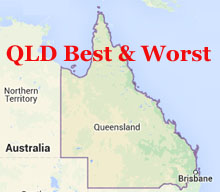
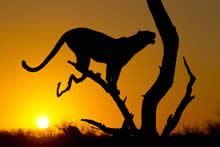
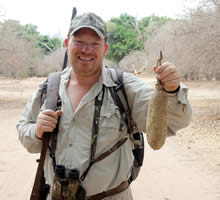
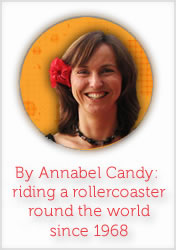


A very useful guide to guides Annabel. I have sadly been neglecting my reading of late – I have a pile next to my bed that are gathering dust. The days seem to be so busy at the moment I only seem to manage 10-20 minutes before my eye-lids start to droop.
I must admit I’m not much of a non-fiction reader but having read through your notes, I think I need to read these books! If only to keep myself focussed and productive – and reading again! I’ll start with No. 1 – that sounds like a logical beginning.
Hi Deborah,
Great to see you here. I just threw out a load of books that were gathering dust. Some just never get read but when you find a good one it can be life changing.
Wisdom 2.0 is a good choice if you work on the computer. It’s sooo easy to get distracted and it has some great mindfulness tips :)
Yikes! This is so rich, Annabel! This could be a few weeks’ worth of inspiration itself. I used to be an avid reader like you, but now I’m a sorry case, and read much less. Although I can still make it through a book quickly when I want to.
I love these books by Jon Kabat-Zinn and Thich Nhat Hahn. I haven’t read the others. Thanks for the recommendations and inspiration!
Hi Sandra,
Great to see you here.
It is a big yikes but I had the notes so decided to use them :) There’s a lot of crossover with all the mindfulness books but it’s good for me as it keeps me on track and I think I take in a bit more each time.
I think you’d enjoy the other books too and they are both short sharp reads which is a bonus.
What a great list of books. I will definitely add at least one of these to my list, which seems to increase more than decrease these days.
Thanks for sharing and posting such lovely excerpts.
Hi John,
Oh there are always more books to read and that’s a good thing :) So glad you like the recommendations.
I went to bed and read a book last night for the first time in ages. I’ve been binge watching The West Wing… staying up too late and after a few days feeling rgim. Reading is the best way to get to sleep… and I have a couple of books by Thich Nhat Hanh… next on the list. This is a post to refer back to.
Hi Seana,
I don’t do TV and am on my second Thich Nhat Hanh book. I want to go and stay at his retreat in France!